With health being at the forefront of everyone’s agenda, biophilic design in workspaces should be prioritized above anything else.
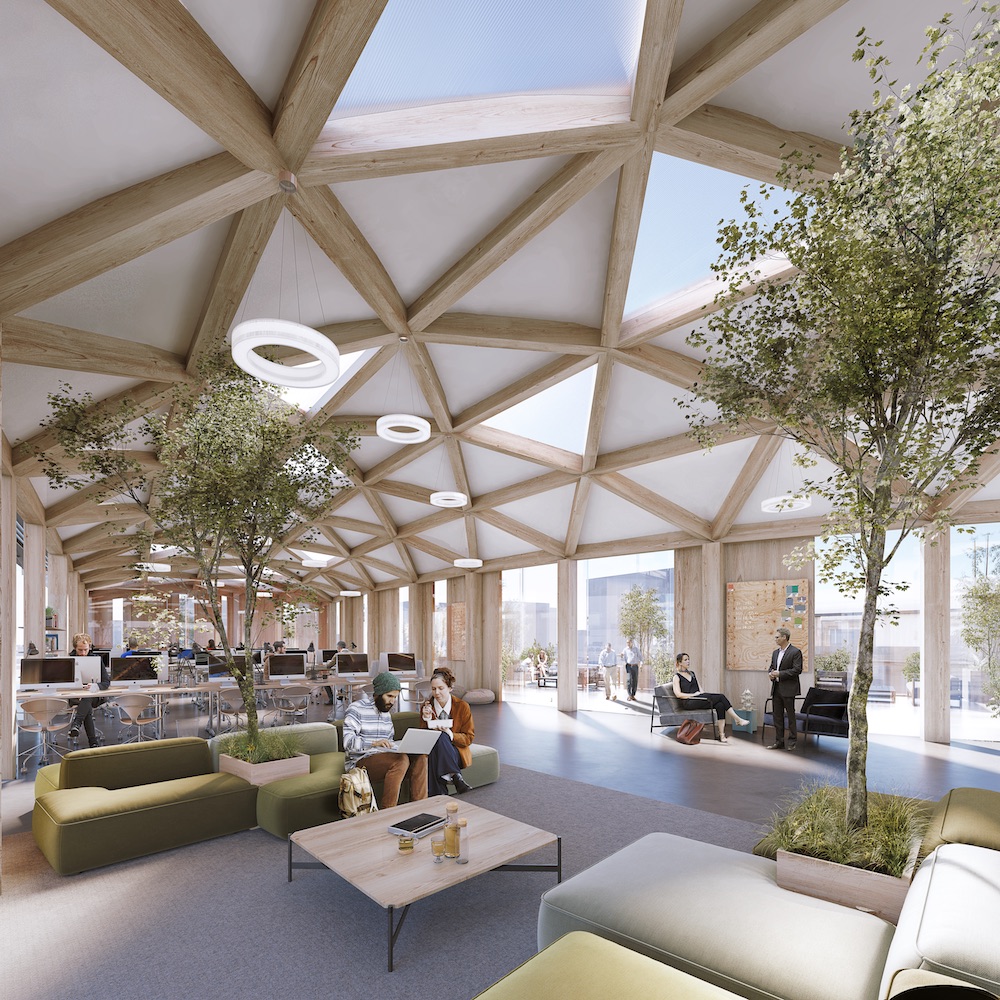
The COVID-19 pandemic has highlighted the many benefits we receive from being immersed in nature, even if only achieved by standing on a balcony or porch with views of a few trees. As we spend more time indoors by necessity, we’ve come to realize just how important accessibility to nature is to sustaining healthy lives. One of the clearest examples of this is the evolving focus on biophilic design, which seeks to integrate nature into our indoor spaces.
As we start to think about what office life will be like after the pandemic has ended/subsides, we must consider the necessary changes that will take shape to keep employees safe and healthy. And while that traditionally encompasses social distancing of desk spaces and the sanitization of shared surfaces, we must also consider how essential biophilic design is.
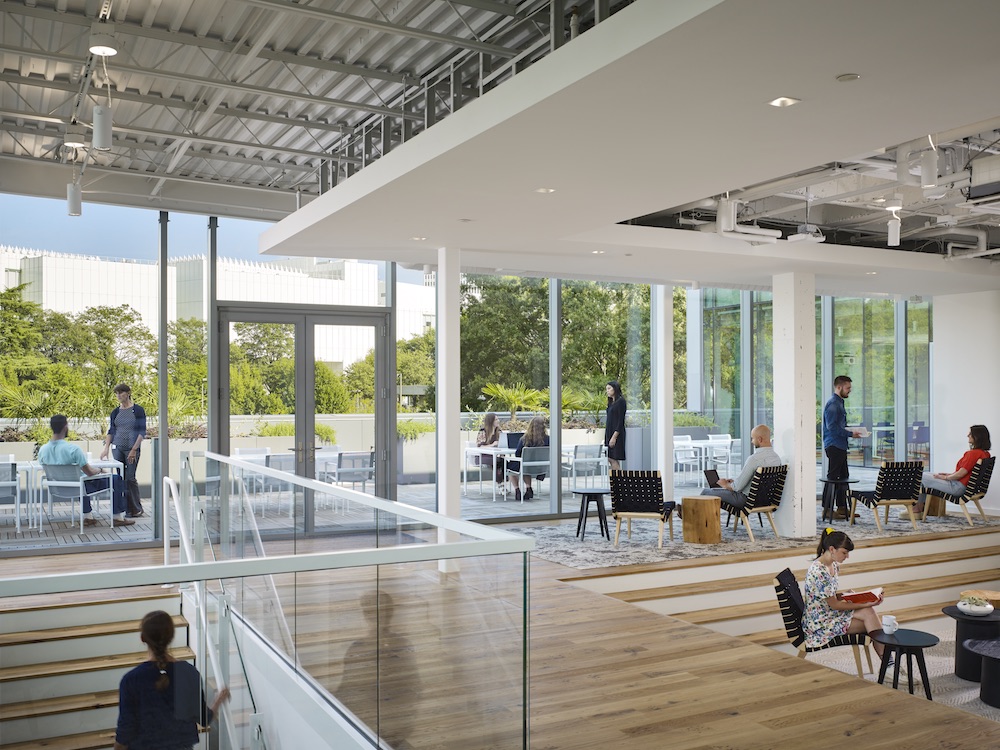
What It Is and Why We Need It
By definition biophilic design is a concept used within the building industry to increase occupant connectivity to the natural environment through direct nature, indirect nature, and space conditions. Not to mention, the benefits of biophilic design in offices are significant — a report by Human Spaces on the global impact of biophilic design in the workplace has identified the positive benefits of biophilic design in supporting multiple organizational outcomes, including wellbeing, productivity, and creativity. Additionally, it has been proven that the spaces we inhabit have distinct physiological and psychological impacts on us.
As we navigate through life changed by COVID-19, the health and wellbeing of those who spend their days in offices are more important than ever. The emotional toll that the pandemic has taken can negatively affect productivity and mental health. Based on a review of more than 50 empirical studies, it has been concluded that an environment devoid of nature can even have a negative effect on health and well-being. Therefore, the use of biophilic design can send out a strong company-wide message that expresses the value of employee health, both physically and mentally.
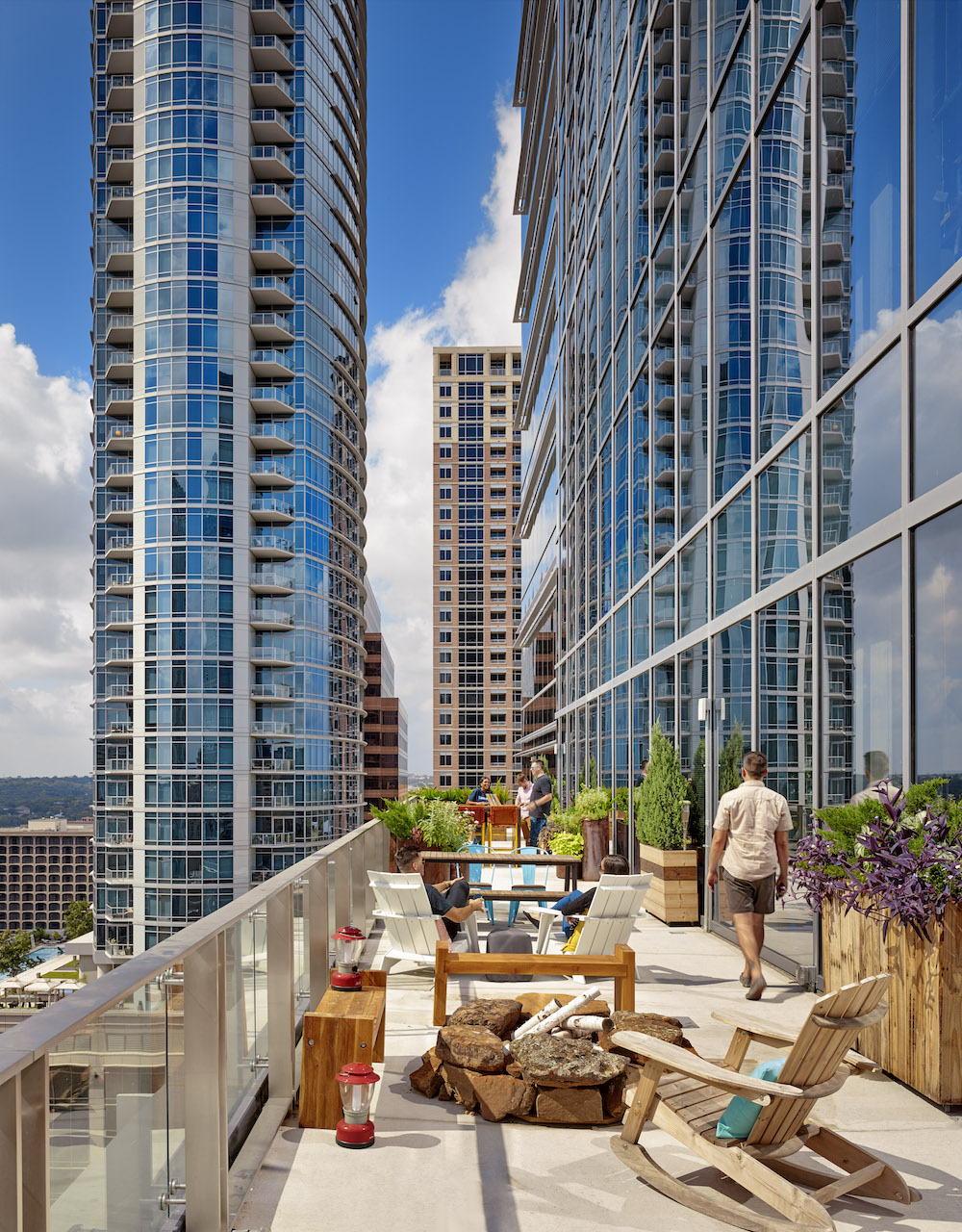
How Biophilia Takes Shape in Corporate Interior Design
Biophilic design in corporate interiors is something that we have been integrating into our practice for quite some time now—always taking an active interest in design that focuses on health and the built environment. For the most part, clients will typically lean towards the safer side of interior design, approaching their office design to accommodate different types of employees and their unique working styles. However, we have seen just how the pandemic has exacerbated the need to provide spaces with access to outdoors or have natural elements embedded in them.
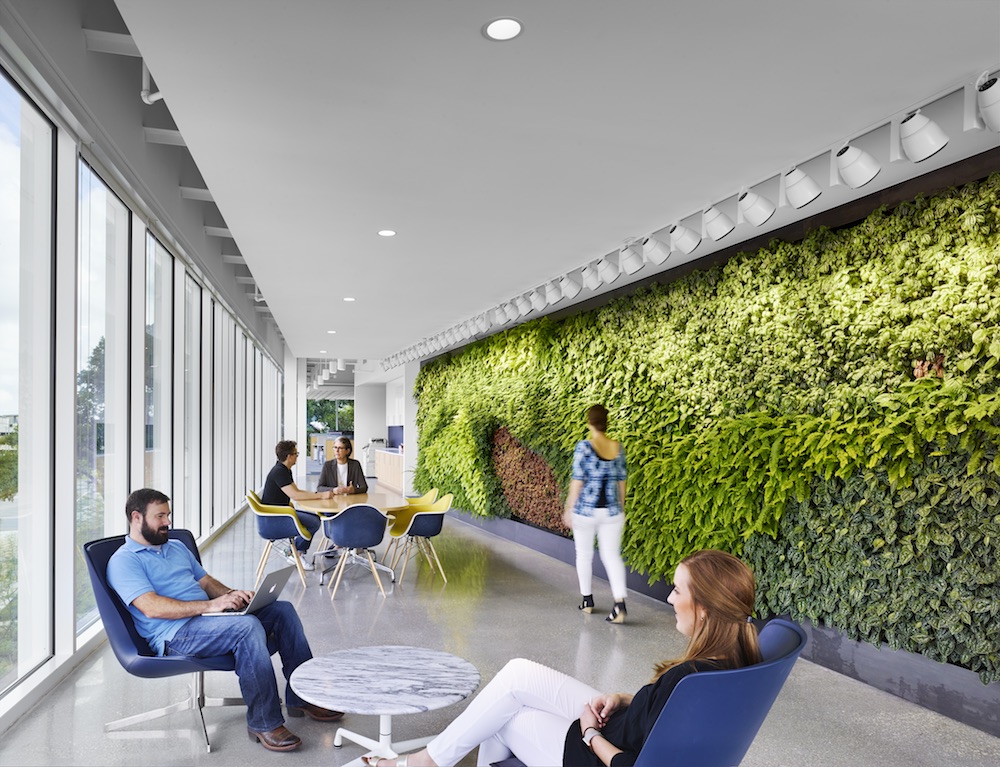
When it comes down to incorporating natural themes, we consider a few things. Can you see it? Touch it? Smell it? Hear it? Is it inside or outside? With references to nature, we think about how the combination of materials, textures, patterns, and sounds can stimulate the brain positively. Even including hints of nature that are not necessarily real, such as art with themes associated with nature, can stimulate this response within people. Take Van Gogh’s Water Lilies, for example—the references to nature are part of what makes it pleasing to so many. Similarly, the effective use of natural stones and materials can prompt the same cognitive reaction. Creating spatial experiences that reference movements that happen in nature, such as standing at a park that looks over a cliff, can directly translate to someone standing at the top of a skyscraper—which can be the case for a lot of people within the office setting.
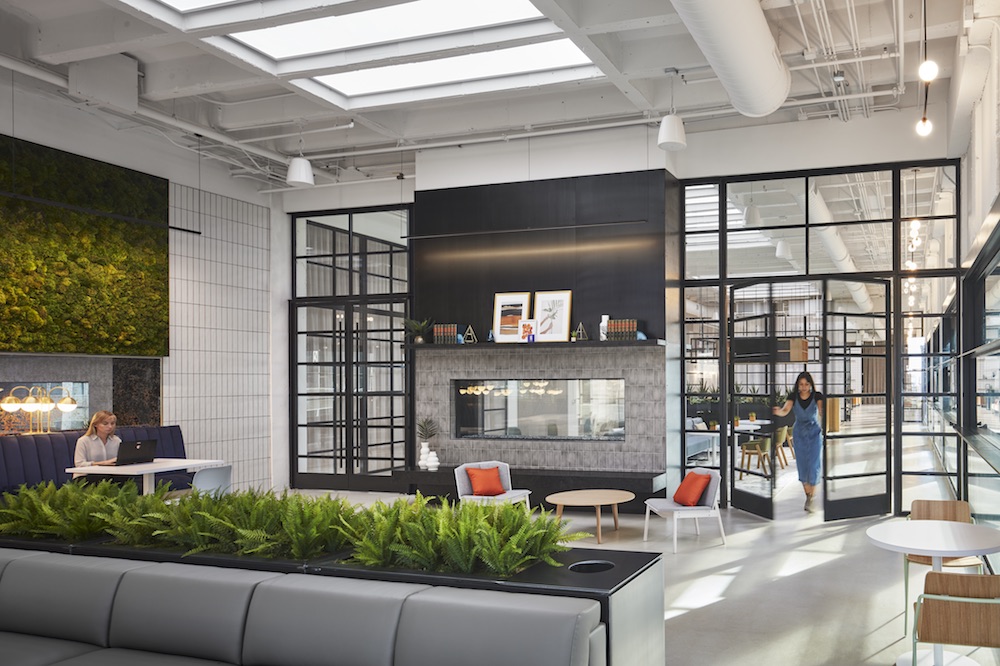
Before the pandemic, it wasn’t just about putting plants into a space but also the use of sounds. There is currently a lot of research by scientists and designers on how just the sound of water, the trickle, and splash, can draw an immediate sense of tranquility. We are just starting to find that those natural sounds, paired with mood music or white noise, help people focus and be productive. However, as we design these spaces to simulate biophilia, it is important to not overdo it. One or two elements will accomplish that desire to be in tune with the outdoors, but anything more would be overwhelming and distracting in the workplace. That is why biophilic design tends to be much more subtle and cohesive with the other elements within the space.
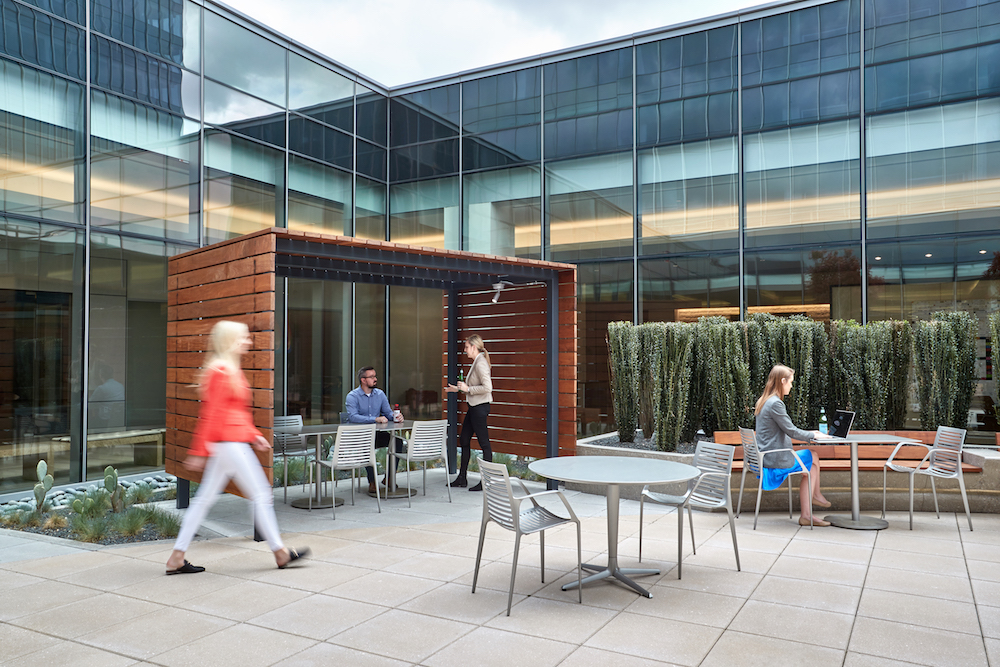
The Future of Biophilia
When consulting with clients regarding their wants and needs for the workplace, biophilic design may not always be on their radar, but it should be offered each time. As soon as you verbalize biophilia’s meaning and offer insights on the benefits, people are immediately interested. It is all about how we communicate our plans and provide insights on why it is good for people, makes them much more active in the workplace, and reduces absenteeism.
While there are still many questions looming over developers, tenants, designers, and employees, certainly the office space won’t look the same. As the new normal has set in, we can expect many employees to return to the office, at least during the latter half of the year. So what does this mean for biophilic design? We’ll certainly see that incorporating natural themes becomes more prominent than ever as people return to the spaces that take up a large part of their lives. With health being at the forefront of everyone’s agenda, it is for certain that spaces will prioritize this above anything else.
Check out WDM’s list of best plants for the office here.

